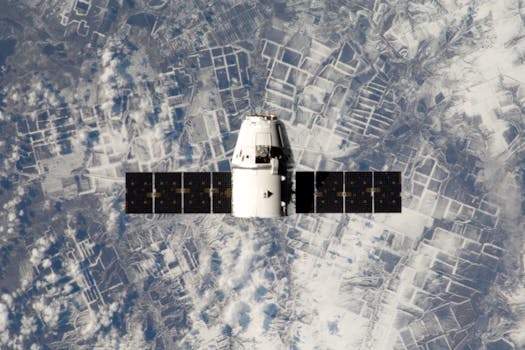The Future of Satellites: Revolutionizing Global Connectivity
The future of satellites is poised to revolutionize global connectivity, enabling faster and more reliable communication systems. With advancements in space technology, satellites are becoming increasingly important for various applications, including navigation, remote sensing, and telecommunications.

The Future of Satellites: Revolutionizing Global Connectivity
The future of satellites is poised to revolutionize global connectivity, enabling faster and more reliable communication systems. With advancements in space technology, satellites are becoming increasingly important for various applications, including navigation, remote sensing, and telecommunications. The integration of satellites into our daily lives is expected to have a significant impact on the way we communicate, access information, and navigate our surroundings.
One of the primary drivers of the future of satellites is the growing demand for global connectivity. As the world becomes increasingly interconnected, the need for reliable and efficient communication systems is becoming more pressing. Satellites are well-positioned to meet this demand, offering a range of benefits, including high-speed data transfer, low latency, and wide coverage areas. With the development of new satellite constellations, such as OneWeb and SpaceX’s Starlink, the future of satellites is looking brighter than ever.
Advancements in Space Technology
The rapid advancement of space technology is a key factor in the future of satellites. Recent breakthroughs in areas such as propulsion systems, materials science, and satellite design are enabling the development of more efficient, cost-effective, and capable satellites. For example, the use of electric propulsion systems is allowing satellites to achieve greater fuel efficiency, while advancements in materials science are enabling the creation of lighter, more durable satellite components. These advancements are expected to have a significant impact on the future of satellites, enabling the development of more sophisticated and capable satellite systems.
Another area of significant advancement is in the field of satellite manufacturing. The use of 3D printing and other advanced manufacturing techniques is enabling the rapid production of satellite components, reducing the time and cost associated with traditional manufacturing methods. This is expected to have a major impact on the future of satellites, enabling the rapid deployment of satellite constellations and reducing the cost of access to space.
Applications of Satellites
Satellites have a wide range of applications, including navigation, remote sensing, and telecommunications. The future of satellites is expected to see significant growth in these areas, as well as the development of new applications, such as satellite-based Earth observation and space-based solar power. For example, the use of satellites for navigation is becoming increasingly important, with the development of systems such as the Global Positioning System (GPS) and the European Union’s Galileo system. These systems are enabling more accurate and reliable navigation, with a range of applications, including aviation, maritime, and land transportation.
The use of satellites for remote sensing is also becoming increasingly important, with applications in areas such as weather forecasting, climate monitoring, and natural resource management. The development of high-resolution imaging satellites is enabling the creation of detailed maps of the Earth’s surface, while the use of satellite-based sensors is enabling the monitoring of environmental phenomena, such as deforestation and ocean health.
Challenges and Opportunities
Despite the many opportunities presented by the future of satellites, there are also significant challenges that must be addressed. One of the primary challenges is the issue of space debris, which is becoming an increasingly significant problem as the number of satellites in orbit grows. The development of sustainable space practices, such as the use of reusable launch vehicles and the implementation of responsible satellite disposal practices, is essential to mitigating this challenge.
Another challenge is the issue of regulatory frameworks, which are often struggling to keep pace with the rapid advancement of space technology. The development of clear and consistent regulatory frameworks is essential to enabling the growth of the satellite industry, while also ensuring that the benefits of satellites are shared equitably among all stakeholders.
In conclusion, the future of satellites is poised to revolutionize global connectivity, enabling faster and more reliable communication systems. With advancements in space technology, satellites are becoming increasingly important for various applications, including navigation, remote sensing, and telecommunications. While there are significant challenges that must be addressed, the opportunities presented by the future of satellites are substantial, and it is likely that satellites will play an increasingly important role in shaping our world in the years to come.
